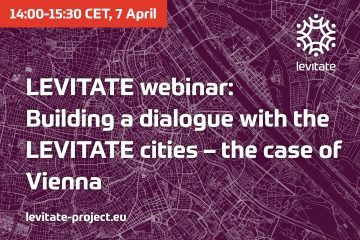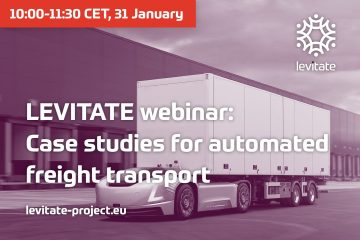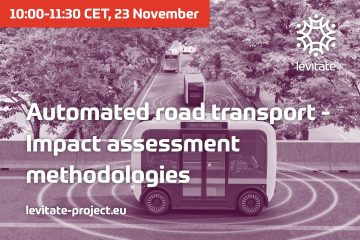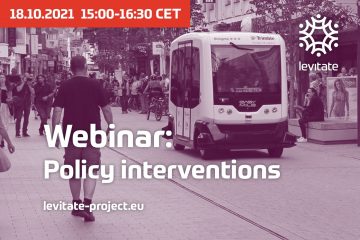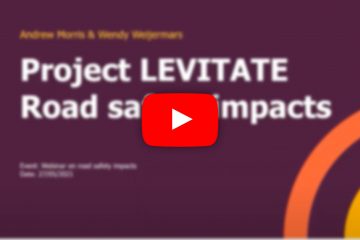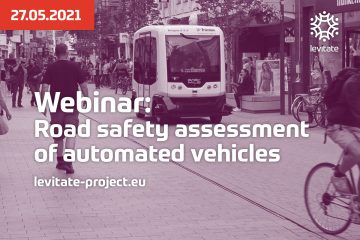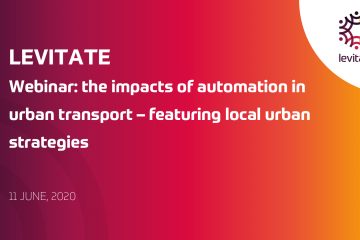On April 7th, LEVITATE hosted a public webinar showcasing the principles of backcasting and the opportunities the resulting Policy Support Tool (PST) offers. Additionally, results of case studies in Vienna were presented, including the impacts of tolls on Cooperative, Connected and Automated Mobility (CCAM) and last-mile automated urban shuttle services.
First, Andrew Morris from Loughborough University, presented the LEVITATE project and its goal of building tools to help European cities, regions and national governments prepare for a future with increasing levels of automated vehicles. Amongst others, the project has developed methods of measuring the impacts of CCAM, including using backcasting principles, on mobility, safety, the environment and society.
Then Martin Zach from the Austrian Institute of Technology (AIT) laid out how LEVITATE’s backcasting methodology was established. Essentially, the method approaches the regulation of CCAM by starting from the top: initially, high-level visions and targets are set up (e.g. reducing CO2 emissions, accidents and fatalities), then possible influencing factors are identified (e.g. AV penetration rate and modal split of all journeys) and finally policy interventions are drawn up (e.g. road use pricing or public space reorganization).
This methodology is part of the foundations used to design LEVITATE’s open-access, web-based and user-friendly Policy Support Tool (PST), which was presented by Apostolos Ziakopoulos, from the National Technical University of Athens (NTUA). It is a one-stop-shop that integrates all of LEVITATE’s methodologies and findings, which can be used to assess CCAM general and targeted policy impacts using different automation penetration level scenarios. The webinar attendees were walked through the different parameters of the tool, which includes the assessment of 23 impacts, policy recommendations, benefits and costs of CCAM policies.
Finally, Gerald Richter and Johannes Müller from AIT concluded by showing how regulating CCAM could impact the city of Vienna. The researchers presented how the use of various tolls could influence modality shares, including automated and human-driven cars. They further highlighted how autonomous last-mile urban shuttle service could be deployed according to demographic density, average age and location of neighborhoods in Vienna.
See the presentation containing all the slides from this webinar »
The recording of the webinar can be viewed below:
LEVITATE’s final conference will be held on May 25th in Brussels.
Register here to attend in-person or online »


